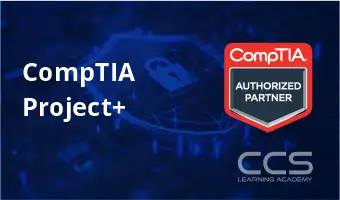Popular Topics
All Business & Project Management Courses
Business & Project Management Online Training Courses - Live
Organizations are under pressure to respond rapidly to change, meet customer needs, and maximize resources. Project managers help their organizations meet these challenges by establishing consistent, repeatable methodologies that reduce risk, cut waste, and provide a competitive advantage. We offer Microsoft Project, Project Management Professional (PMP)® certification preparation, and other industry-standard project management trainings. Learn techniques to manage projects that are on time, on budget, meet specifications, and result in higher quality products and services.Filter by Topic
Filter by Vendor
PMI Professional in Business Analysis (PMI-PBA) Certification
Course Description The PMI Professional in Business Analysis (PMI-PBA)® highlights …
What you'll learn
Increase your odds of passing the PMI Professional in Business Analysis (PMI-PBA)® the first time
Advance your career opportunities and career path options in the business analysis profession
Shorten study time by streamlining the recommended exam resources
Run through simulated practice exams for the Business Analysis: Process Groups, Knowledge Areas, Processes, and Competencies
Learn the essential areas necessary to pass the exam
Master the 6 Business Analysis Process Groups and 6 Business Analysis Knowledge Areas that constitute the exam
Conquer the 35 Business Analysis Processes
Grasp the tasks for eliciting, analyzing, documenting, validating, and verifying requirements
Become proficient with business analysis terminology
Create a personalized test-taking strategy based on your strengths and opportunities
PMI – PgMP (Program Management Professional)
Course Description The Program Management Professional (PgMP)® training course will …
CBAP Certification Prep Boot Camp
Course Description Prepare for the CBAP® and CCBA® exams in …
What you'll learn
Analyze and remember the most important elements of the Business Analysis Body of Knowledge®
Record progress and identify gaps in your business analysis qualifications
Analyze your unique combination of education, knowledge, and skills to determine the best way to package it for the CBAP application
Explore the nature and construction of the application and examination
Improve your chances of success with the CBAP certification process
Influence your organization to recognize the value of CBAP certification
Importance of documenting your education and experience for continued certification requirements
What knowledge from the BABOK and other sources comprise the CBAP and certification
Use practical methods for improving testing success
IIBA certifications
55205-A: Mastering Microsoft Project 2016
Course Description: This three-day, instructor-led course is intended for individuals …
What you'll learn
Understand the discipline of project management as it applies to using Microsoft Project 2016.
Create a Work Breakdown Structure.
Identify Task Types & Relationships.
Define Resources within Project.
Make Work Package Estimates.
Create an Initial Schedule.
Create a Resource Leveled Schedule.
Create Projects from templates, Excel files.
Create Global templates.
Create formulas and graphical indicators.
The steps to record a macro.
Format Output and Print Reports.
Integrate Multiple Projects.
Set up a Project with a Calendar, Start date, and scheduling method.
Understand Manually Schedule vs. Auto Schedule.
Manage multiple projects.
Be able to create a master project list with shared resources.
Have a fundamental understanding of how Microsoft Project will help them track their projects.
Understand what is new in Project 2016 and how it will increase their productivity.
Learn how the ribbon will help them get the most of out of this productivity tool.
Learn how to quickly change views and see what is going on with their projects.
Understand the 5 essential steps in building a successful project plan.
Prepare a new project plan and set the date and other basic information.
Enter detailed project information.
Understand how to sequence tasks.
Understand and define basic resource types.
Assign resources to tasks.
Understand the benefits of baselining a project or specific tasks.
Understand the basics of how to track project progress.
Create a new project using a template, Excel, a SharePoint Tasks List or a new Project file.
Establish one or more calendars to constrain resource availability.
Configure Microsoft Project to calculate the schedule from the Start Date forward or from the Finish Date backward.
Understand how to turn on Manually Schedule and Auto Schedule.
Understand when to use Manually Schedule.
Understand the limitations of Manually Scheduling.
Build and use summary and subordinate tasks.
Understand and use milestones.
How to organize the WBS.
How to format the WBS.
Develop WBS outlines.
Assign completion criteria.
Evaluate the WBS.
Understand and use WBS outlines.
Understand how to link Project artifacts to their projects.
Understand how to create notes on tasks.
Understand the different types of task relationships.
Understand and use various methods to create relationships.
Determine and display task sequence.
Understand how to use Lag, Lead and Delay.
Define the different types of resources.
Define individual resources that will be used on the project.
Record the cost(s) of using each type of resource.
Record the limit of availability for each type of resource by establishing a resource calendar and defining the maximum units of that resource.
Assign values for resources, duration and work.
Understand task types.
Understand Effort Driven scheduling.
Understand material resources and their costs to a project plan.
Identify the critical path.
Understand difference between slack and slippage.
Calculate float.
How to leverage constraints.
How to get the benefit from the Task Inspector, and the impact of changes on a project schedule.
Adjust a project schedule to account for limited resources.
View the overall cost and schedule of a project.
Identify resources that are over- allocated for a project schedule.
Use multiple ways to adjust tasks and assignments to remove over- allocation for any resource.
Set a baseline.
Enter and manage project performance data.
Pick a tracking method.
Perform variance analysis.
Sync Projects results with SharePoint.
Create standardized views, with the power of sorting, filtering and grouping.
Customize a variety of standard reports.
Learn how to use Visual Reports.
Export reports in a variety of formats.
Use common resources among multiple projects.
Link tasks between multiple projects.
Create a consolidated view of multiple projects and shared resources.
Take advantage of the advance features of Microsoft Project.
Be able to create a Macro.
Share common settings among all future projects.
55054-A: Mastering Microsoft Project 2013
Course Description: This three-day, instructor-led course is intended for individuals …
What you'll learn
Understand the discipline of project management as it applies to using Microsoft Project 2013.
Create a Work Breakdown Structure.
Identify Task Types & Relationships.
Define Resources within Project.
Make Work Package Estimates.
Create an Initial Schedule.
Create a Resource Leveled Schedule.
Create Projects from templates, Excel files.
Create Global templates.
Create formulas and graphical indicators.
The steps to record a macro.
Format Output and Print Reports.
Integrate Multiple Projects.
Set up a Project with a Calendar, Start date, and scheduling method.
Understand Manually Schedule vs. Auto Schedule.
Manage multiple projects.
Be able to create a master project list with shared resources.
Have a fundamental understanding of how Microsoft Project will help them track their projects.
Understand what is new in Project 2013 and how it will increase their productivity.
Learn how the ribbon will help them get the most of out of this productivity tool.
Learn how to quickly change views and see what is going on with their projects.
Understand the 5 essential steps in building a successful project plan.
Prepare a new project plan and set the date and other basic information.
Enter detailed project information.
Understand how to sequence tasks.
Understand and define basic resource types.
Assign resources to tasks.
Understand the benefits of baselining a project or specific tasks.
Understand the basics of how to track project progress.
Create a new project using a template, Excel, a SharePoint Tasks List or a new Project file.
Establish one or more calendars to constrain resource availability.
Configure Microsoft Project to calculate the schedule from the Start Date forward or from the Finish Date backward.
Understand how to turn on Manually Schedule and Auto Schedule.
Understand when to use Manually Schedule.
Understand the limitations of Manually Scheduling.
Build and use summary and subordinate tasks.
Understand and use milestones.
How to organize the WBS.
How to format the WBS.
Develop WBS outlines.
Assign completion criteria.
Evaluate the WBS.
Understand and use WBS outlines.
Understand how to link Project artifacts to their projects.
Understand how to create notes on tasks.
Understand the different types of task relationships.
Understand and use various methods to create relationships.
Determine and display task sequence.
Understand how to use Lag, Lead and Delay.
Define the different types of resources.
Define individual resources that will be used on the project.
Record the cost(s) of using each type of resource.
Record the limit of availability for each type of resource by establishing a resource calendar and defining the maximum units of that resource.
Assign values for resources, duration and work.
Understand task types.
Understand Effort Driven scheduling.
Understand material resources and their costs to a project plan.
Identify the critical path.
Understand difference between slack and slippage.
Calculate float.
How to leverage constraints.
How to get the benefit from the Task Inspector, and the impact of changes on a project schedule.
Adjust a project schedule to account for limited resources.
View the overall cost and schedule of a project.
Identify resources that are over- allocated for a project schedule.
Use multiple ways to adjust tasks and assignments to remove over- allocation for any resource.
Set a baseline.
Enter and manage project performance data.
Pick a tracking method.
Perform variance analysis.
Sync Projects results with SharePoint.
Create standardized views, with the power of sorting, filtering and grouping.
Customize a variety of standard reports.
Learn how to use Visual Reports.
Export reports in a variety of formats.
Use common resources among multiple projects.
Link tasks between multiple projects.
Create a consolidated view of multiple projects and shared resources.
Take advantage of the advance features of Microsoft Project 2013.
Be able to create a Macro.
Share common settings among all future projects.
55121-A: Microsoft Project 2013
Course Description: This two-day instructor-led course is intended for IT …
What you'll learn
Understand the terminology.
Understand project management basics.
Understand and utilize the Microsoft Project 2013 Interface.
Create and configure calendars.
Configure scheduling.
Utilize and navigate views.
Create tasks.
Modify tasks.
Delete tasks.
Create resources.
Assign tasks to resources.
Monitor resources and their tasks.
Delete resources.
Track project progress.
Create and configure reports.
Accurately troubleshoot a project.
Close a project.
Share the project using OneDrive.
Share the project using Project Server 2013 or Project Online.
Share and sync the project using SharePoint 2013.
Project Management Institute – Risk Management Professional (PMI-RMP)
Course Description PMI’s Risk Management Professional (PMI-RMP®) credential is a …
Certified Associate in Project Management (CAPM)
Course Description In this CAPM exam prep training course, you …
What you'll learn
Prepare to pass the CAPM exam while completing the required 23 contact hours/PDUs
Decipher PMBOK® Guide processes and knowledge areas
Identify significant steps of the project life cycle
Examine the PMBOK® Guide tools and techniques for exam success
Evaluate your exam preparedness and create a study plan
- 1
- 2












